No one is insured against the appearance of the coke on the sole of the iron, it is worth taking a break for a few seconds, and the working surface has already become covered with adherent burnt fibers or a dark coating has appeared. Before cleaning the iron at home, it is necessary to determine the type of contamination and the cause of its appearance.
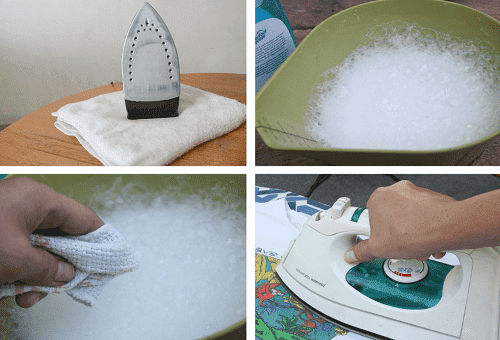
No less important role in the choice of a tool is played by the quality of the material from which the sole of the device is made. Clearing the iron from the deposit is not so difficult, most importantly, do not abuse mechanical exposure options, giving preference to household chemicals. In any house you can find a reagent suitable for the solution of the problem.
In order not to seek funds that will help remove carbon deposits from the iron, the following rules must be observed during ironing:
- Always consider the type of fabric and do not exceed the recommended parameters in pursuit of a quicker result.
- Regularly wipe the working surface of the iron with a soft cloth, removing invisible villi. Over time, they turn into a thick coating, which is difficult to clean.
- It is highly discouraged to work in an environment of distractions like a TV.
- If possible, the laundry should be ironed from the wrong side. Due to the constant physical impact and features of matter, it is the shortest pile on it.
If the trouble does happen, you must immediately clean the soleplate of the iron. The solidified mass will leave much more reluctantly than the fresh decoction.
How to remove on the plaque depending on the type of pollution
Ways how to clean the iron from carbon deposits, today there are many. Some of them are universal, others are specialized. Choosing the optimal, you can be guided by the nature of the pollution and the degree of its resistance. Pencil for iron cleaning. Inexpensive and effective means with which you can clean up a dense layer of burnt dirt in a matter of minutes without damaging the surface. It is better to reserve in advance an effective means, becausethe maximum result is guaranteed in the first minutes after contamination. First we heat the device, then take a pencil and start gently driving it along the sole, the product must be melted, not broken. Then you need to take a piece of cotton cloth and use it to wipe the plaque. Do not drive the soles of the soles on the fabric, because of this, holes for the escape of steam can clog. The variant is suitable for the treatment of household appliances with any coating.
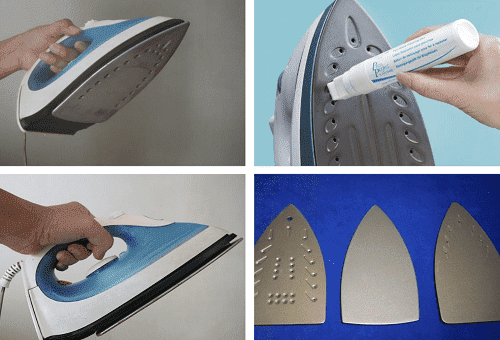
Tip: To clean the iron from the carbon with a pencil, open the windows in the room or go out to the ventilated balcony. The smell emitted by the melting agent is very harsh and unpleasant. He is able to deliver a lot of unpleasant feelings to his family.
- Vinegar. The ideal option is to clean the iron from the carbon in the home and not have a negative impact on the surface with a smooth relief. A tablespoon of 9% vinegar is bred in a glass of boiled water, we moisten a soft cloth in the solution. The iron is heated to a hot state, but not to the limit, and we begin the processing of the sole. Working with acetic acid is accompanied by a rather sharp smell, so keep the device away from the face. Remove dirt from the outlet holes using cotton swabs or toothpicks wrapped in cotton wool.
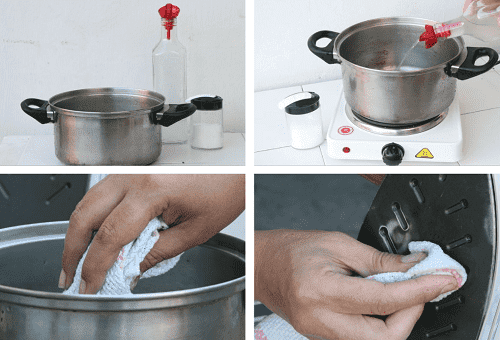
- Mixture of lemon and ammonia. From the traces of burnt matter will help get rid of the treatment with a lemon mixture. For its preparation, mix the juice with half a lemon with a few drops of ammonia. The resulting product wipe the surface, not carrying out a strong pressure. When working with an expensive coating, we are very careful not to leave the used product on the sole for more than a few minutes. It is worth considering that juice is not recommended to replace with citric acid. A similar abrasive can scratch the sole, causing irreparable harm to the device.
- Soap. It will help to clean the iron from the coke that just appeared. Just take a small piece of the product and drive them on the heated soles, bypassing the holes. After that, the dirt should be removed using a slightly damp rag.
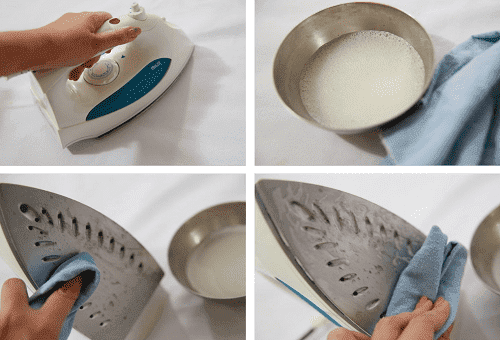
- Nail polish remover. A soft product that can be used to remove traces of melted polyethylene. We drip a little liquid on the cotton pad and conduct it on a still warm iron.
- Hydrogen Peroxide. To work with a coating, it is necessary to use not a liquid product form, but hydroperitic tablets. We carry out the preparation on the hot sole of the device, remove the dirt residues with a soft damp cloth. If the contamination is insignificant, then first you can try a solution of peroxide. It is strictly prohibited to increase the effectiveness of the method with citric acid! Such aggressive influence leads to the appearance of scratches, in which then dirt is actively collected.
- Toothpaste and soda. These two soft abrasives are recommended to be used as a last resort, only to wash the old carbon deposits, which other approaches failed. The selected product is slightly diluted with water, obtained by mass rubbing the problem area. For machining, take a soft cloth or sponge.
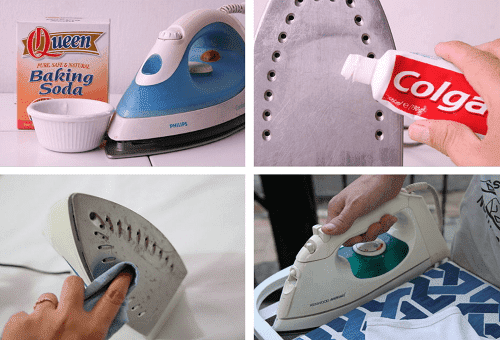
Some landladies clean the contaminated surface with a paste made from citric acid, or salt. According to experts, these options give more harm than good. The dirt really departs, but as a result of the violation of the integrity of the coating, the functionality of the device is noticeably reduced. And if you regularly use salt, you can spoil even a durable and reliable steel coating.
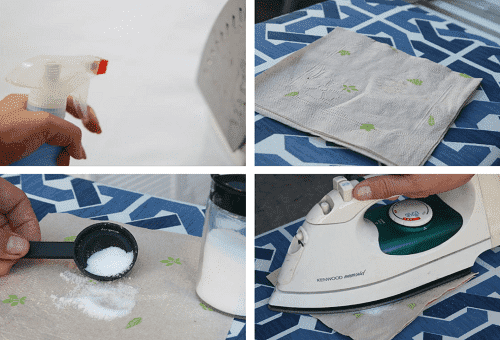
How to choose the best tool?
In order to thoroughly clean the iron from the carbon in the home by one of the above methods and not to damage the relief of the sole, the following recommendations should be considered:
- A pencil is considered a universal tool and successfully cares for ceramic, metal and Teflon coating. However, before buying a product, you need to pay attention to what material it is intended for.
- Vinegar, nail polish remover, hydrogen peroxide, lemon mixture. With their help, you can process ceramic, teflon and metal surfaces, but only if it is not covered with a special expensive non-stick or self-cleaning material.
- Soda and toothpaste. Only metal outsole.
Compliance with these rules will allow long time and without any discomfort to operate a household appliance, restoring its functionality if necessary.


